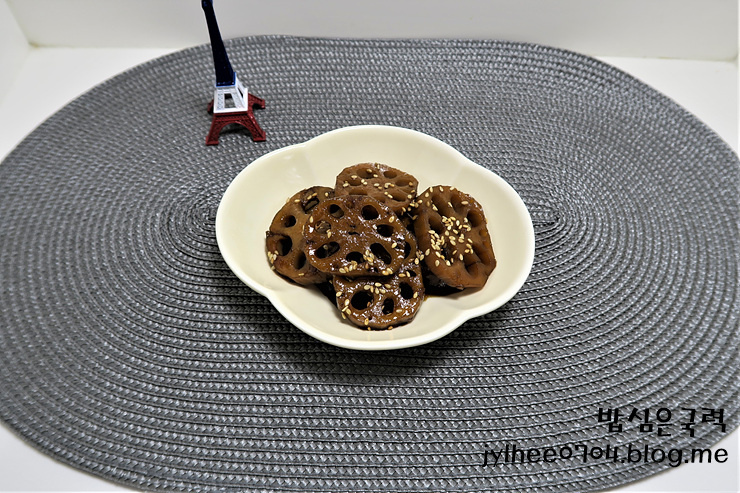
Braised lotus roots
Hello? Rice is national power. I'm going to make braised lotus roots today.
4 serving
Within 30 minutes

밥심은국력
- Ingredients
-
-
lotus root300g
-
Water1.5cup
-
thick soy sauce1/2cup
-
Oligosaccharide3TS
-
grain syrup3TS
-
ginger powder2~3little
-
canola oil2TS
-
- Cooking Steps
-
STEP 1/8Cut lotus root into 0.5cm thick pieces.
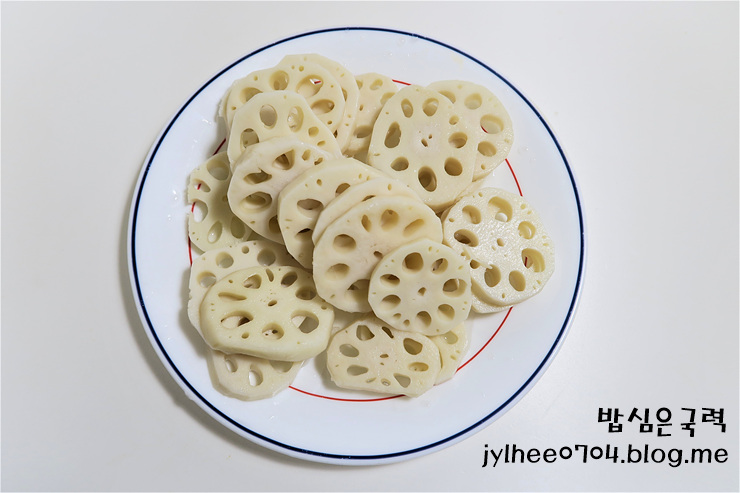 STEP 2/8Put 1 tablespoon vinegar in boiling water and blanch lotus roots for 5 minutes.
STEP 2/8Put 1 tablespoon vinegar in boiling water and blanch lotus roots for 5 minutes.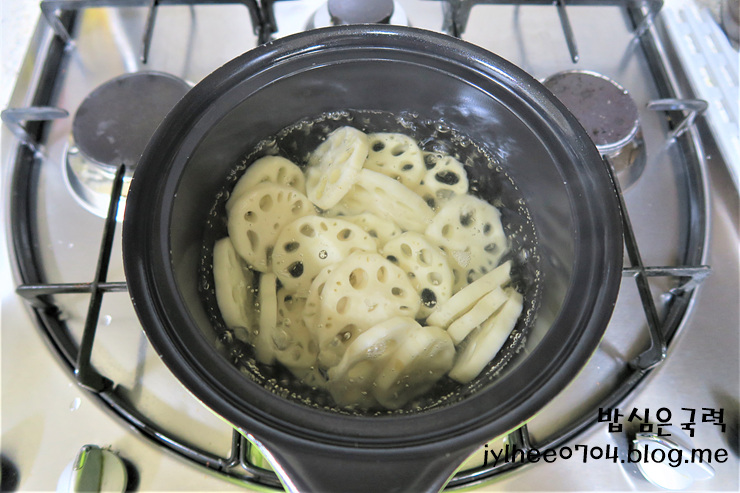 STEP 3/8Rinse lotus roots in cold water to remove moisture.
STEP 3/8Rinse lotus roots in cold water to remove moisture.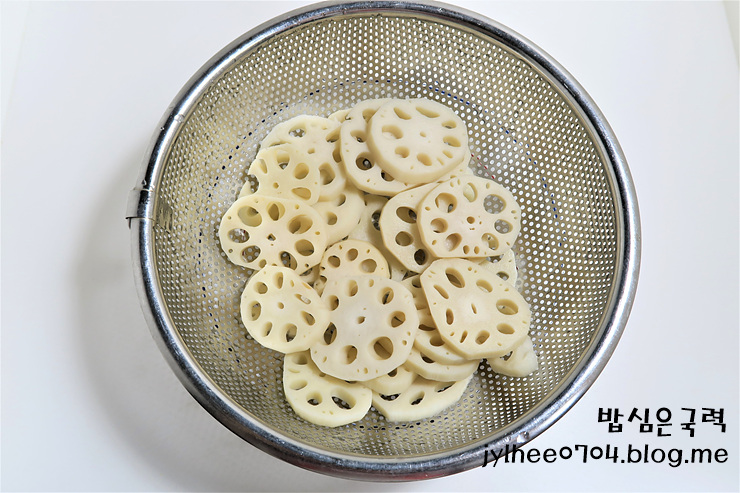 STEP 4/8I used one and a half cups of water, but I only showed you one cup. Ginger is good for removing the unique smell of lotus roots, so I used ginger powder, which is better if you use ginger. If you add 2 tablespoons of canola oil (replaceable cooking oil), it's good to prevent the lotus root from burning smoothly. Adjust the color of the riceGood. If you don't have oligosaccharide, you can have starch syrup
STEP 4/8I used one and a half cups of water, but I only showed you one cup. Ginger is good for removing the unique smell of lotus roots, so I used ginger powder, which is better if you use ginger. If you add 2 tablespoons of canola oil (replaceable cooking oil), it's good to prevent the lotus root from burning smoothly. Adjust the color of the riceGood. If you don't have oligosaccharide, you can have starch syrup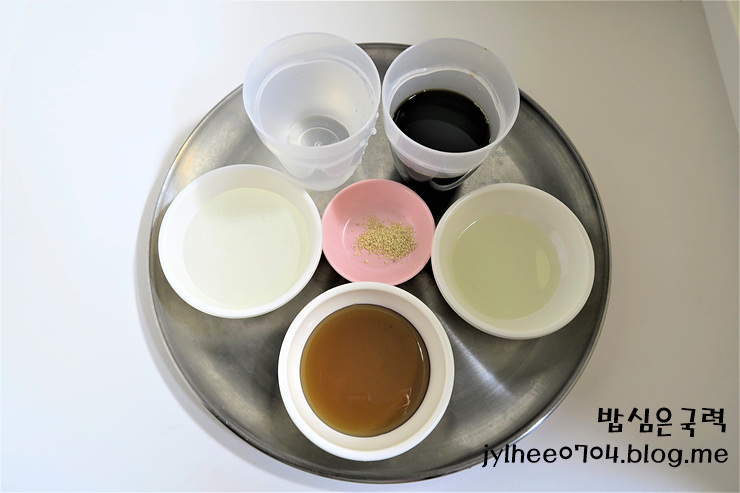 STEP 5/8Put the seasonings in the pot first, melt them well, and then add the blanched lotus root. Cover and cook over medium heat.
STEP 5/8Put the seasonings in the pot first, melt them well, and then add the blanched lotus root. Cover and cook over medium heat.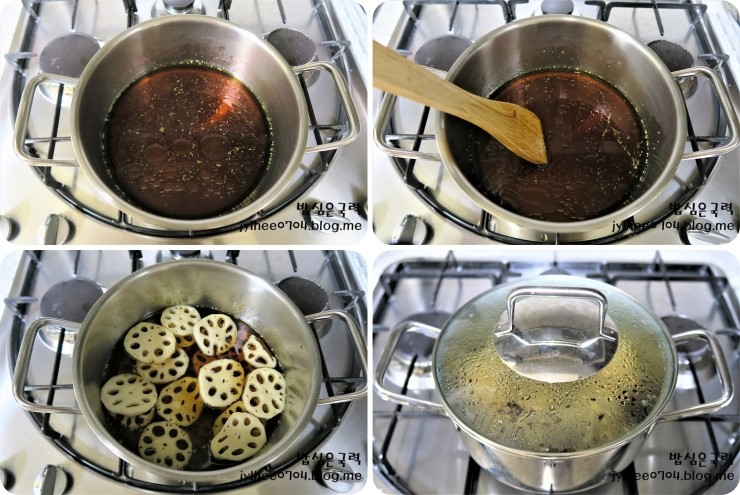 STEP 6/8When it starts to boil, open the lid and simmer over low heat for about 30 minutes
STEP 6/8When it starts to boil, open the lid and simmer over low heat for about 30 minutes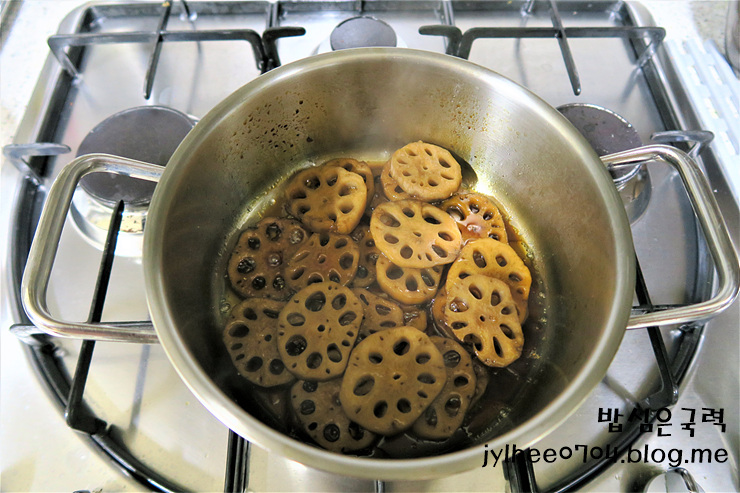 STEP 7/8Finish it off with sesame seeds.
STEP 7/8Finish it off with sesame seeds. STEP 8/8It's good if there's some soup left on the bottom of the pot. You have to put it in an airtight container so that the lotus root doesn't dry out.
STEP 8/8It's good if there's some soup left on the bottom of the pot. You have to put it in an airtight container so that the lotus root doesn't dry out.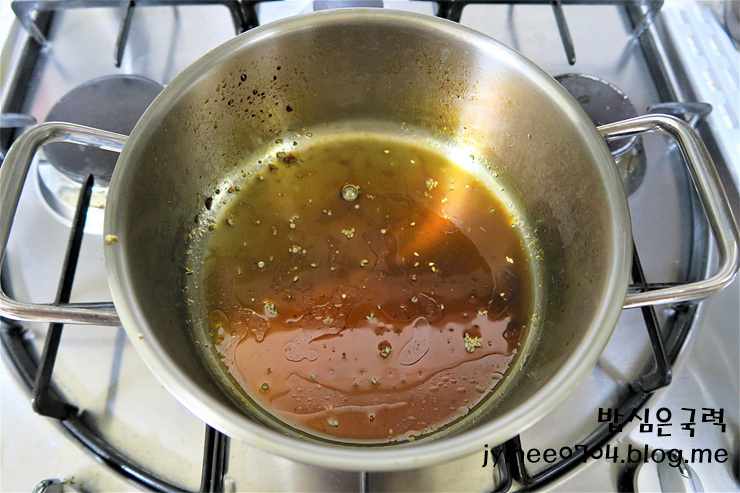 Lotus root contains carbs, asparagine, arginine, etc., and is rich in vitamin C, so it is good for relieving fatigue and preventing colds. Lotus root browns easily because it touches the air, but the color becomes white if you add a little vinegar when boiling. A good lotus root is a light yellow color with no scratches on the lotus root skin and completely joints, and a short, thick, and straight joints. When storing lotus roots, wrap them in newspapers with dirt and store them in the refrigerator.
Lotus root contains carbs, asparagine, arginine, etc., and is rich in vitamin C, so it is good for relieving fatigue and preventing colds. Lotus root browns easily because it touches the air, but the color becomes white if you add a little vinegar when boiling. A good lotus root is a light yellow color with no scratches on the lotus root skin and completely joints, and a short, thick, and straight joints. When storing lotus roots, wrap them in newspapers with dirt and store them in the refrigerator.
- Cooking review
-
5.00score
-

 deu****scoreIs the amount of soy sauce right... I tasted it twice in the middle I poured it I think it's going to be really salty I'm doing it right now2019-08-30 17:29
deu****scoreIs the amount of soy sauce right... I tasted it twice in the middle I poured it I think it's going to be really salty I'm doing it right now2019-08-30 17:29
-
- Japchae Recommended recipe
-
-
1
 Red pepper japchae. Golden recipe for red pepper japchae4.97(36)
Red pepper japchae. Golden recipe for red pepper japchae4.97(36) -
2
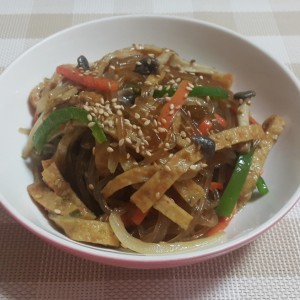 Making fish cake japchae with ingredients in the fridge4.86(77)
Making fish cake japchae with ingredients in the fridge4.86(77) -
3
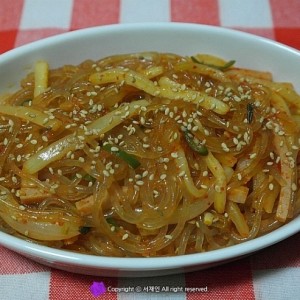 [Noodle dish] Spicy. "Kimchi Japchae"4.96(48)
[Noodle dish] Spicy. "Kimchi Japchae"4.96(48) -
4
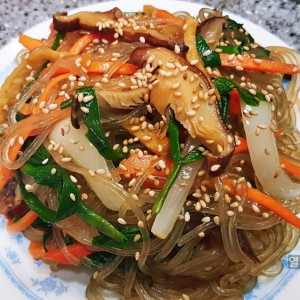
Easy and simple japchae that reduces 4.94(47)
-
- Bulgogi Recommended recipe
-
-
1
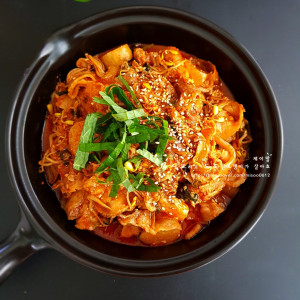 Jongwon Baek Pork Belly Pork Belly Bean Sprout Bulgogi4.96(468)
Jongwon Baek Pork Belly Pork Belly Bean Sprout Bulgogi4.96(468) -
2
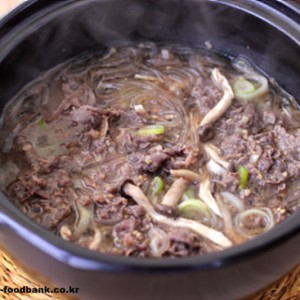 Making Bulgogi with Ttukbaegi4.98(47)
Making Bulgogi with Ttukbaegi4.98(47) -
3
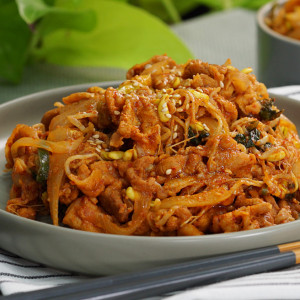 Magical taste! Spicy bean sprout bulgogi! If you stir-fry rice,4.85(27)
Magical taste! Spicy bean sprout bulgogi! If you stir-fry rice,4.85(27) -
4
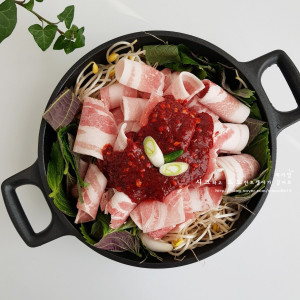 Making Jongwon Baek bean sprout bulgogi4.94(63)
Making Jongwon Baek bean sprout bulgogi4.94(63)
-